Which Wargame Design Studio game boasts the best AI? Why aren’t WDS titles available through Steam or GOG? Is the ongoing war in Ukraine a potential theme?… The final Open October offering – a Q&A with Wargame Design Studio’s Rich Hamiltion – quarters some fascinating terrain.
THC: Does WDS have any new series or unusually themed titles in the works?
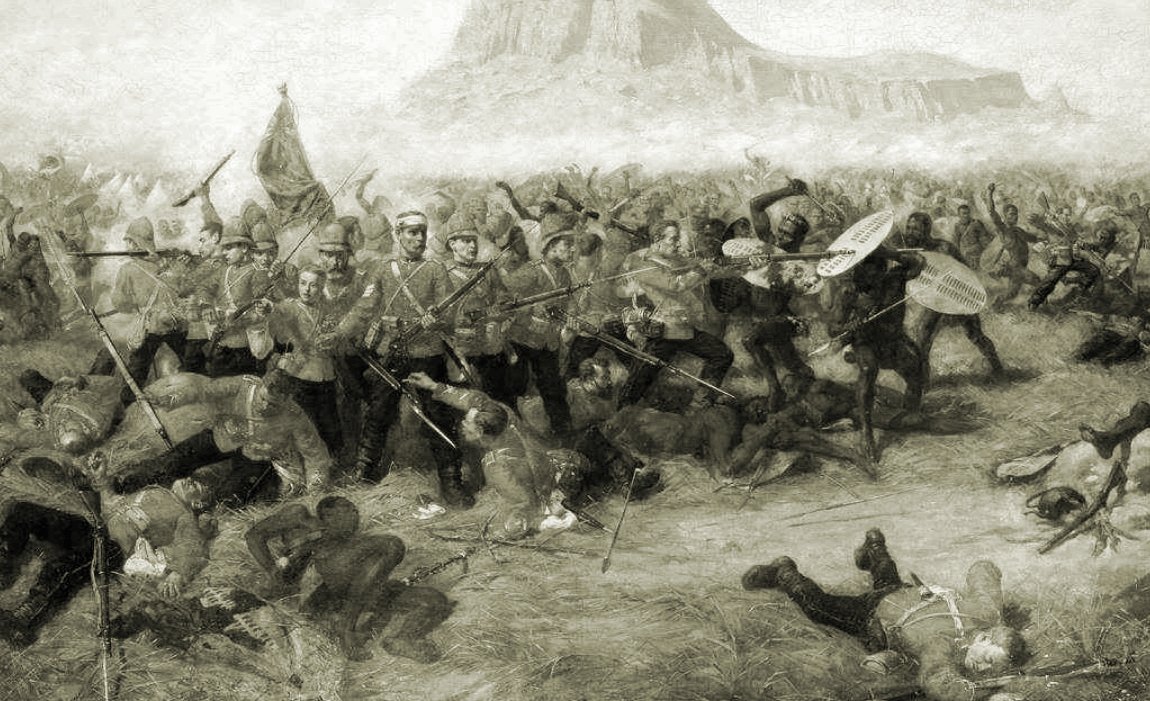
Rich: As we draw down the ‘cone of silence’…! In short, the answer is yes.
The ‘challenge’ we have had at WDS is that we inherited nearly one hundred titles across twelve series in various states. We have had to spend as much effort modernising the existing catalogue as we have working on new projects. This has consumed a lot of our available programmatic and art resources, but we do feel that we are starting to get some level of balance between new vs old. For perspective, since WDS was launched in November 2021 we have released six new full titles and five series demos. In the prior two years, only three games were released, and they were all Panzer Campaigns titles, so there has been an uptick in new content.
As far as new series or unusually themed titles, one offshoot of the WDS efforts is the number of new people offering their services. We have had both previous developers rejoin the fold, or new subject matter experts providing expertise. This has really opened a range of titles that we would not have considered or had the manpower for previously. One example is our upcoming Thirty Years War title. This project is the result of the revitalisation of our Musket & Pike team with the addition of programmatic support. We have a very nice range of titles in development that will showcase the period from the Renaissance till the mid-19th century.
We are currently prototyping four new, different series to allow us to cover additional game scales or time periods. Think pre-Renaissance and Victorian era to get an idea of where we are leaning. We were pleasantly surprised at the response to the Little Big Horn Demo, and we can see that the period 1850 – 1910 is underserved, but ripe for some new innovations.
We really prefer not to share specifics beyond that. The core reason there is time – it’s takes a long time, usually a couple of years, to bring a title to the state of being ready to publish. Talking details too soon creates excitement, followed by frustration for our customer base. So, the guideline we have put in place is to not speak of a game in public unless we are 6 months or less from publication and that we are confident it will make it out the door. No “vaporware” from WDS.
The below images bend that rule a bit… the first one is from our next pending release, which will have a pre-view blog post going up shortly. The next is for a long range project in development – so well outside of that 6 month window at this point.
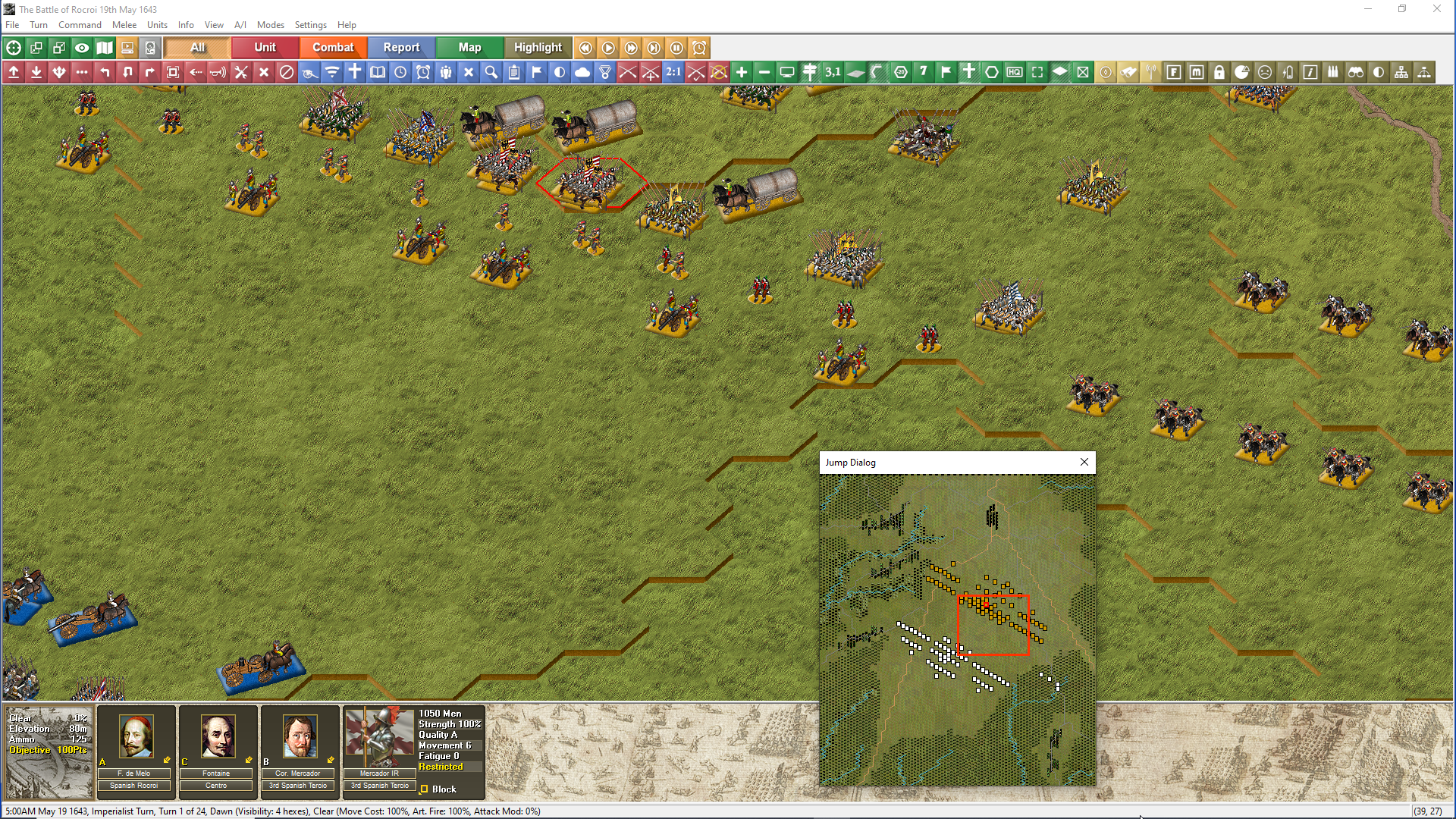
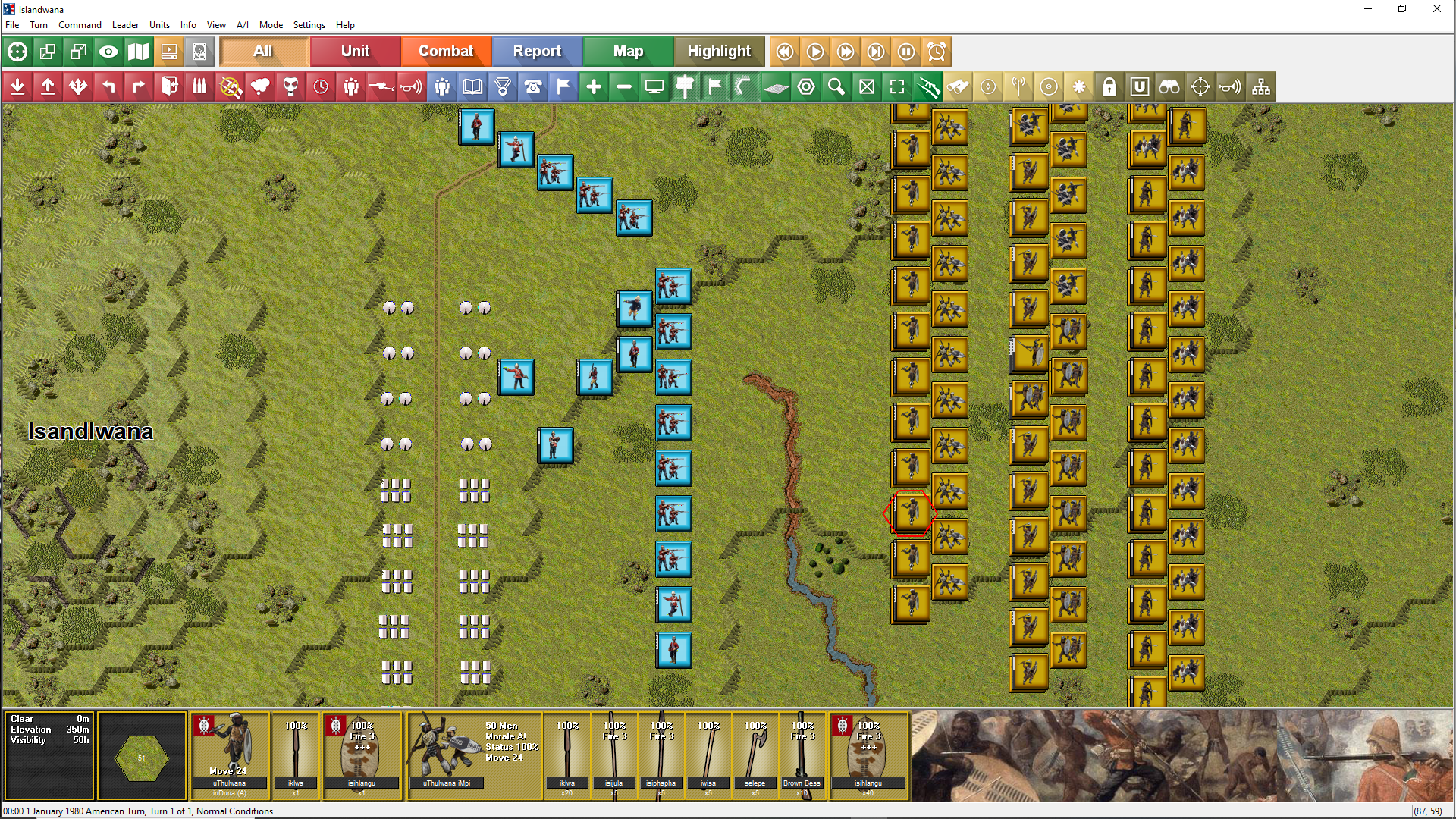
THC: Are there aspects of the ‘John Tiller’ engines that you inherited/acquired that are set in stone, or so poorly documented that making changes is problematic?
Rich: One of the biggest challenges that our programmers have is that there is little to no documentation in the physical programs. John had never written the engines for others to change or update. He passed the code for Panzer Battles across to WDS in 2016 and said go for it! This lack of documentation has meant that we have had to work back through what has been done and understand the evolution of the various engines. This has taken time to do and like everything to date has an impact on the actual resources available.
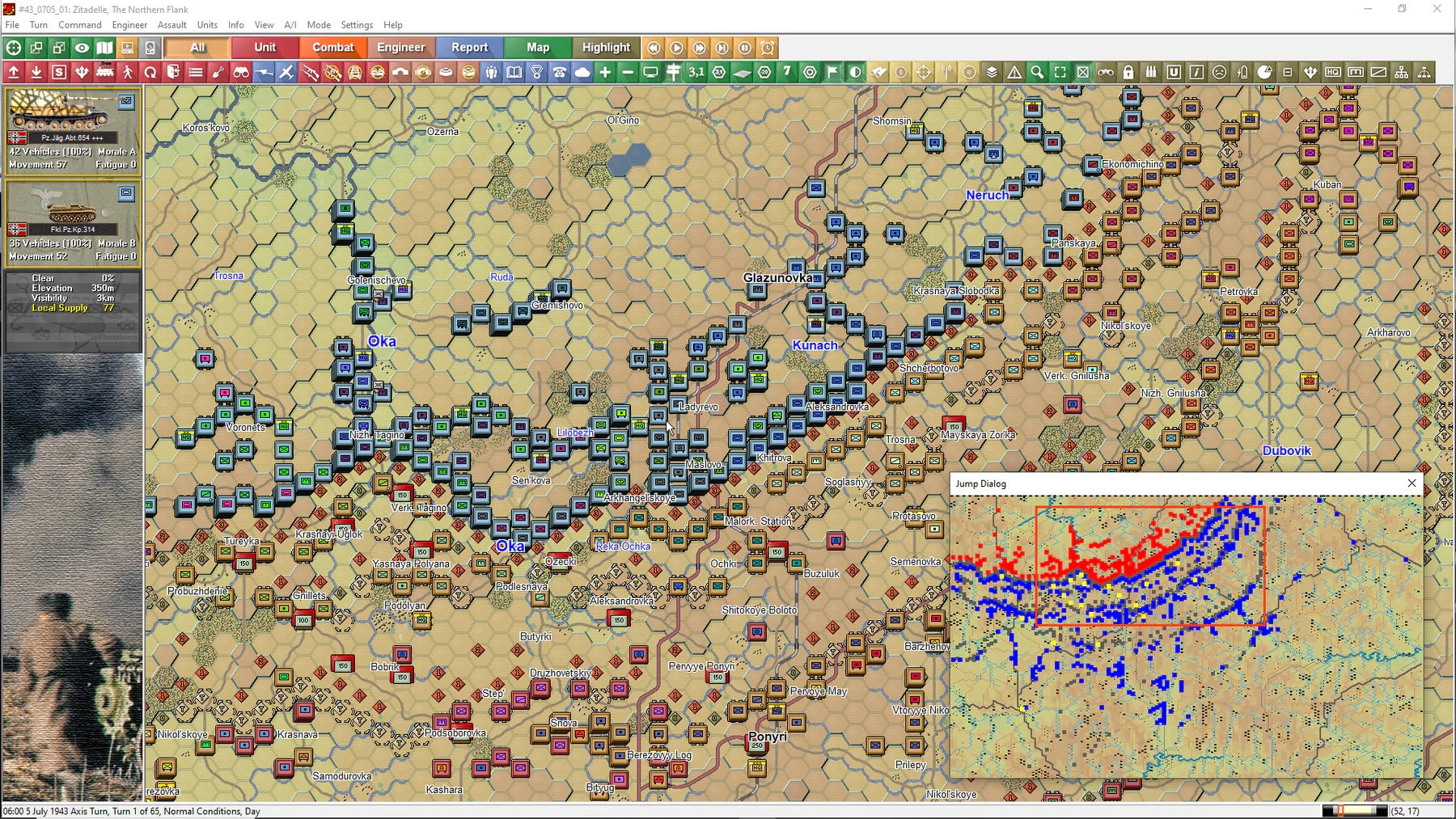
Probably the few items that are set in stone is whether we would change engines say from “I go; you go” to real time. Panzer Campaigns for example, will never be a real time engine. We do have real time engines in our portfolio (Modern Air Power and Naval Campaigns), but there are no intentions to bring them to our land-based series. If some significant changes were to take place in a format currently used for the land based games it would require us to write a new engine from the ground up.
We are slowly updating several of the underlying technologies such as the user interfaces (and making them consistent) as well as using PNG graphics vs BMP. We are also spending a lot of time looking at AI as that is an area that reflects the way most of our customers play the games.
The Tiller series have traditionally been ‘board and chit’ games and we don’t expect that to change. That said, with the strength of the various series being the historical Orders of Battle, if we found a better way to represent them in game, we would consider it. That isn’t the case today, though.
THC: Will we ever see wargames made by other devs sold through the WDS store?
Rich: There is a significant difference between developer and distributor. A distributor is responsible for all the marketing, sales promotion, channel determination and relationships needed to get a game into as many hands as possible. Developers worry about creating the game and getting it into a reasonable form, so it is ready for the public (and ultimately the distributor).
These are very different skillsets and to do both requires the specialised resources in-house. WDS isn’t looking to become a distributor, though we have been approached by other devs in the past. Our preference is to continue to focus on our portfolio, rather than take others to market, anything else would be a distraction. We would consider selling our titles on other platforms, but we are not at that point yet.
Finally, credit to the Matrix/Slitherine team, they have helped maintain our niche by giving those with a small number of titles a way to get to market. They really are the go-to distributor for computerised wargames currently.
THC: Why aren’t WDS titles available through Steam, GOG, and the like?
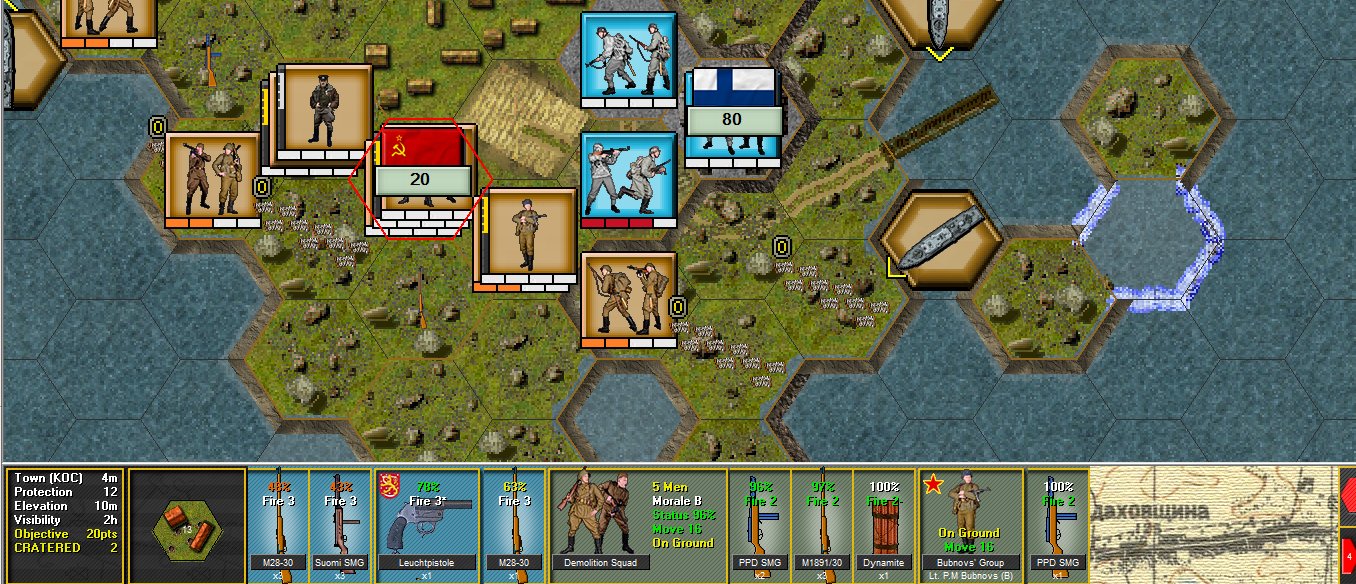
Rich: Ha! See I was answering these questions in order! As mentioned previously, we would consider other platforms beyond our own web store. There are certainly benefits for customers. They have easy access to their library and patching is a non-requirement as it is essentially done in the background.
The challenges for us, the vendor, are primarily around pricing and profitability. From a pricing perspective, can we maintain our existing price points or is there pressure to match the lower pricing that normally proliferates these channels. In addition, there is a significant cut that is taken by these platforms (e.g., Steam takes 30% of gross sales) and at a minimum, sales through these channels would have to increase by 30% just for us to make what we were making beforehand. We do believe the prices we sell for are warranted, primarily due to the amount of content and the long-term support provided, but that may be at risk using some of these distribution channels.
We also wanted to get our products to a point ‘quality-wise’ where they would not be negatively reviewed due to the look and feel. We do believe we are getting past that point now.
That said, we have discussed internally the chance of putting a title or two up onto a platform to understand the potential or otherwise. We will let you all know when that happens.
THC: Which WDS demo/series would you recommend to a wargamer who has zero experience of your oeuvre?
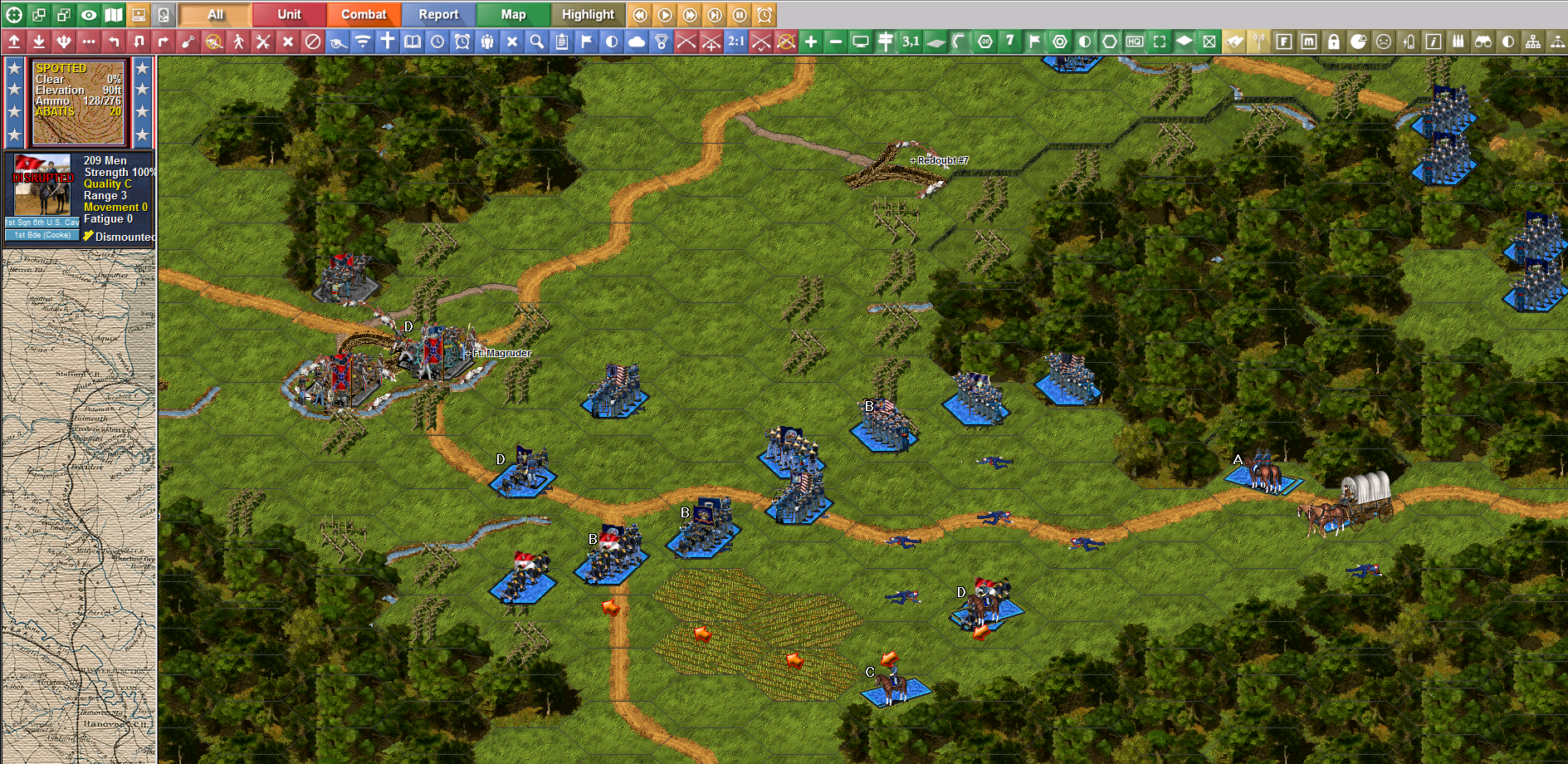
Rich: We would probably suggest a player look at either the Napoleonic (The Final Struggle) or Civil War Battles Demo as their first foray into our catalogue. These period land-based titles play well both in the 2D and 3D graphic modes and remove complexity such as aircraft or long-range artillery that are present in the twentieth century and later titles.
Concepts such as movement, firing and assaulting are all present and in a manner that is like the other Tiller series. The improvements in game graphics have also helped draw players in and help visualise the action that they are playing.
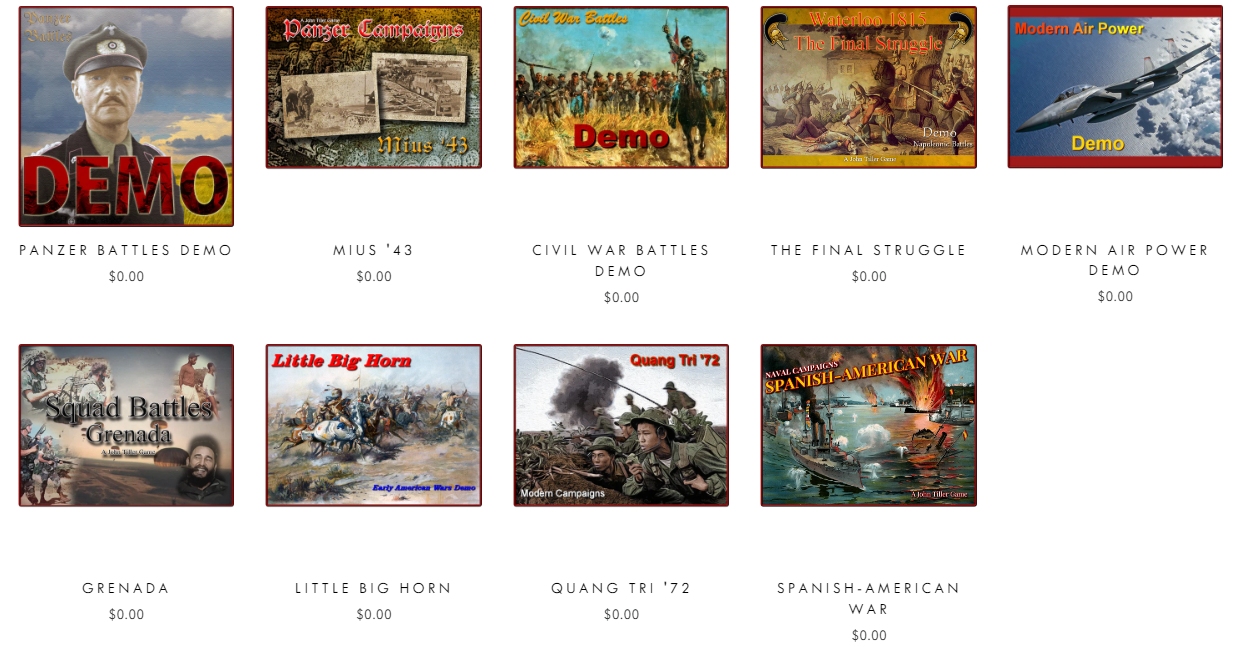
It is probably worth saying that the whole reason we have these demos is to allow people to try before they buy, and we have had customer affirmation that it works. We have seen people add a new series after trying a demo, something they say would not have happened if there was not a free offering.
The distribution process for the demos is handled through our store – so you go through the check out process, but there is no charge. Once the order is complete a download link will be provided as well as a serial number. This is done on screen (after a couple minute processing time) as well as with an email. This allows us to get an idea of how many people are interested in a topic and gives the player an opportunity to join our mailing list, but it also keeps a record for the customer in their store account. So in the future if they get a new computer they can just login and download all their games – demos or full versions – and have access to their serial numbers as well. We keep the versions in our store up to date, so when downloading no further updating is needed.
THC: In your opinion which WDS titles boast the most believable and challenging AIs?
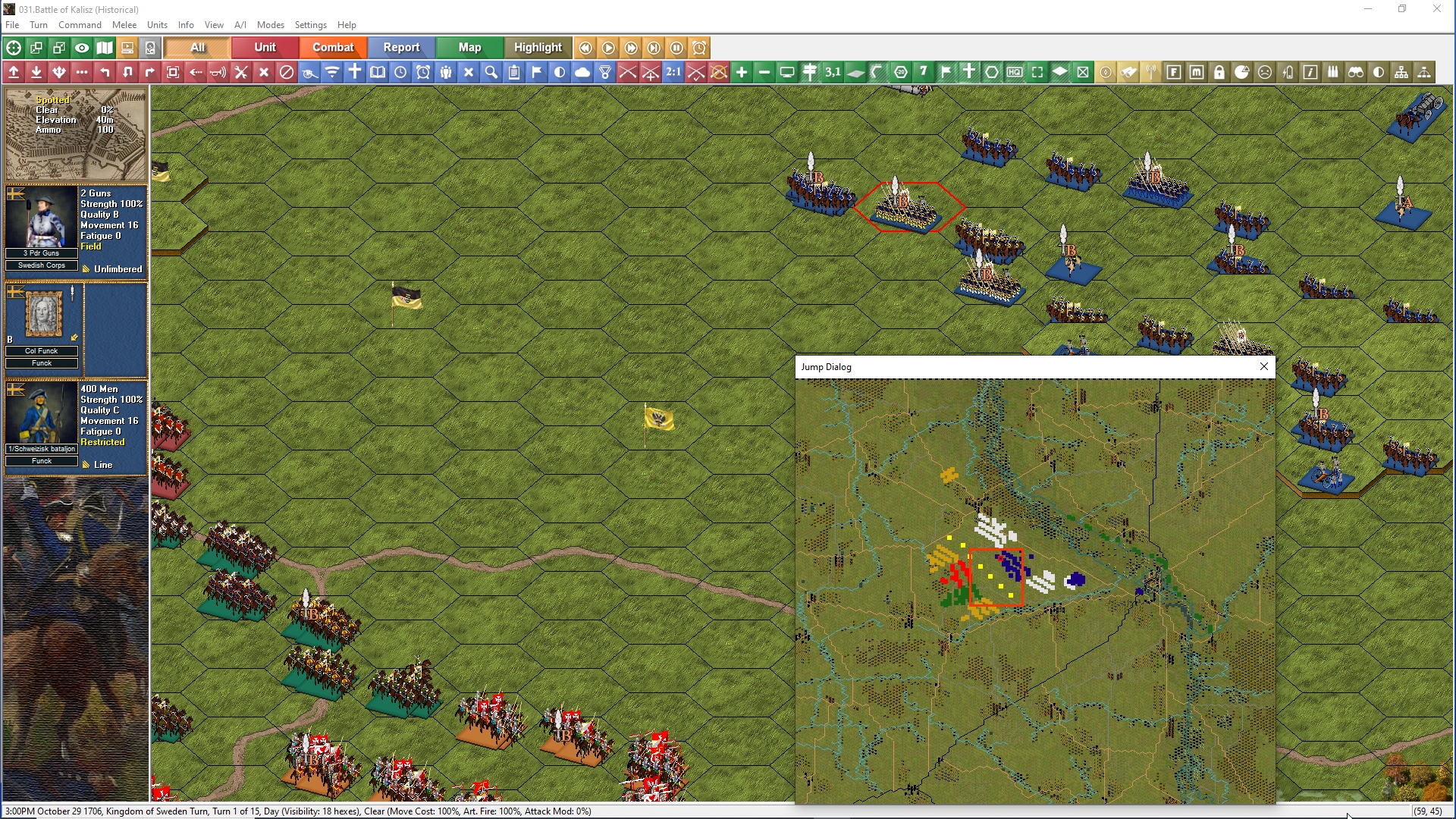
Rich: As mentioned above, we are taking AI very seriously. We have confirmed via our annual surveys, that the vast majority of players play against the AI and that in some series in particular it could be improved.
There is a lot of work ongoing currently on the AI, for example in the Musket and Pike series. Much of this is to cover the unique features of this period such as the different formations used over time, but that is but one example. Improvements in the Musket and Pike series are then promptly ported across to both the Napoleonic and Civil War Battles engines.
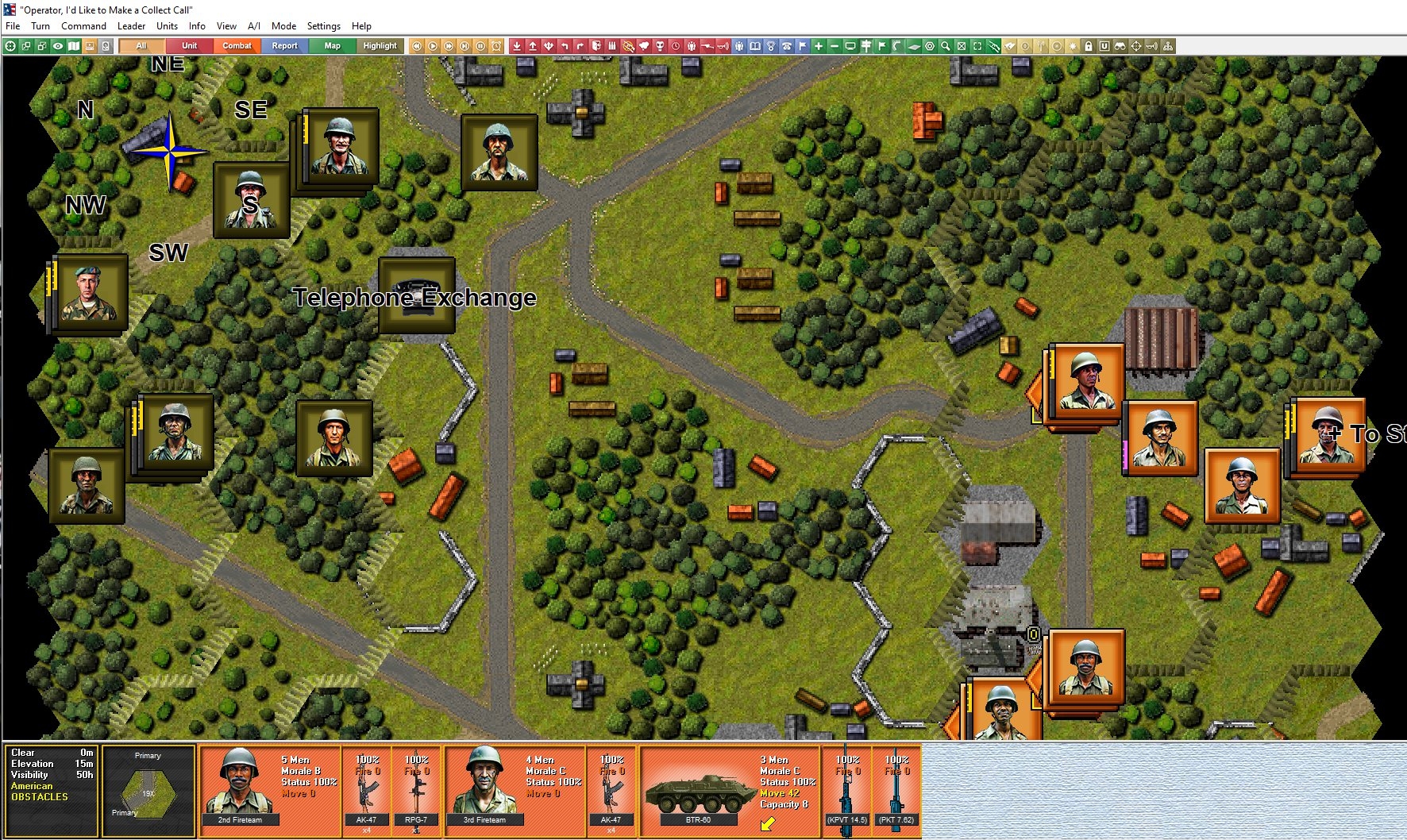
Beyond Musket and Pike, I believe that the Squad Battles engine works quite well when playing against the AI. More tactical games tend to have ‘simpler’ decisions and that will help the AI generally. As we have updated the Squad Battles engine, we have improved pathfinding and a number of fundamental items such as weapon effectiveness and range attenuation calculations. Changes like these provide additional information that the AI can use to make a better choice.
AI will never consistently trump a human player, but as mentioned in the question, ‘believable’ performance is a primary consideration.
THC: I suspect many grogs aren’t aware ‘Commander Control’ is an option in some WDS titles. Would you explain what is?
Rich: The concept behind it is that you as the player select a few command points within your army to issue orders to – the AI then executes those orders for those organizations and then handles the rest of the units not specifically issued orders.
This module has not received any attention since we have taken over the product line beyond receiving the benefits of the AI enhancements implemented for the overall engine. We have plans to delve into this further, but other aspects of the titles have taken priority. It’s hard for those not enmeshed with the projects to understand the depth of work required to make progress. As mentioned previously, the code was not written with the intent of others coming along behind – so often times a change is made and it yields unintended consequences as there is some linked routine we were not aware of – until it breaks. The AI code is this, in spades.
THC: ENVOY is an interesting idea. One day could we see something similar as an integral optional feature in series like CWB?
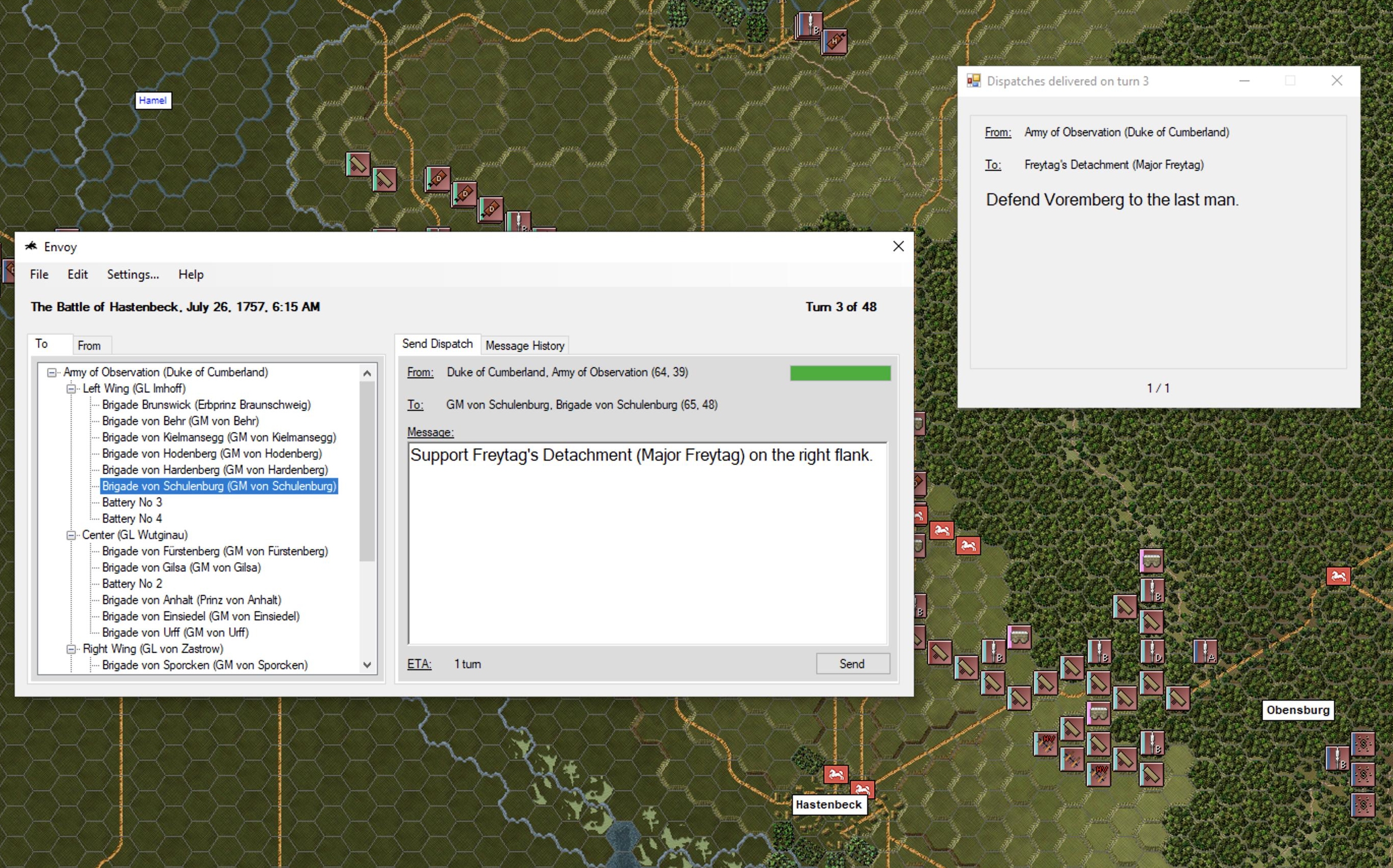
Rich: Yes, there is a high probability you will see something like this implemented in the pre-twentieth century games at some point. The amount of information available to the player is currently exponentially higher than their historical counterparts – so we are interested in providing an option for players to experience the games in something much closer to a realistic setting – delayed orders are a part of that. I would venture to say that tying it to the Commander Control feature would also play in, and further line of sight changes so that unit placement and enemy force displays are based on intelligence gathered – rather than just seeing everything your forces can see in total.
THC: Is there any reason why contemporary conflicts such as the war in Ukraine couldn’t be simmed plausibly using one of your engines?
Rich: With a range of conflicts currently underway, we have discussed what could or couldn’t be done. There is nothing stopping us using engines such as Squad Battles, Armor Battles or Modern Campaigns to simulate these wars. There are new areas such as drones that would need to be modelled, but we do already have them in some engines.
The bigger issue is both the information and morality of covering ongoing wars. Though there is a plethora of information available, determining what actually happened is harder than it appears. We pride ourselves on having accurate orders of battle and scenario setups and that is not as easy as it might appear currently. Knowing for example the structure of Wagner forces at Bakhmut is not as clear as might be expected. Secondly, there is the morality of simming an ongoing war. Some are happy to do it, many are not. We tend to err on the side of conservatism.
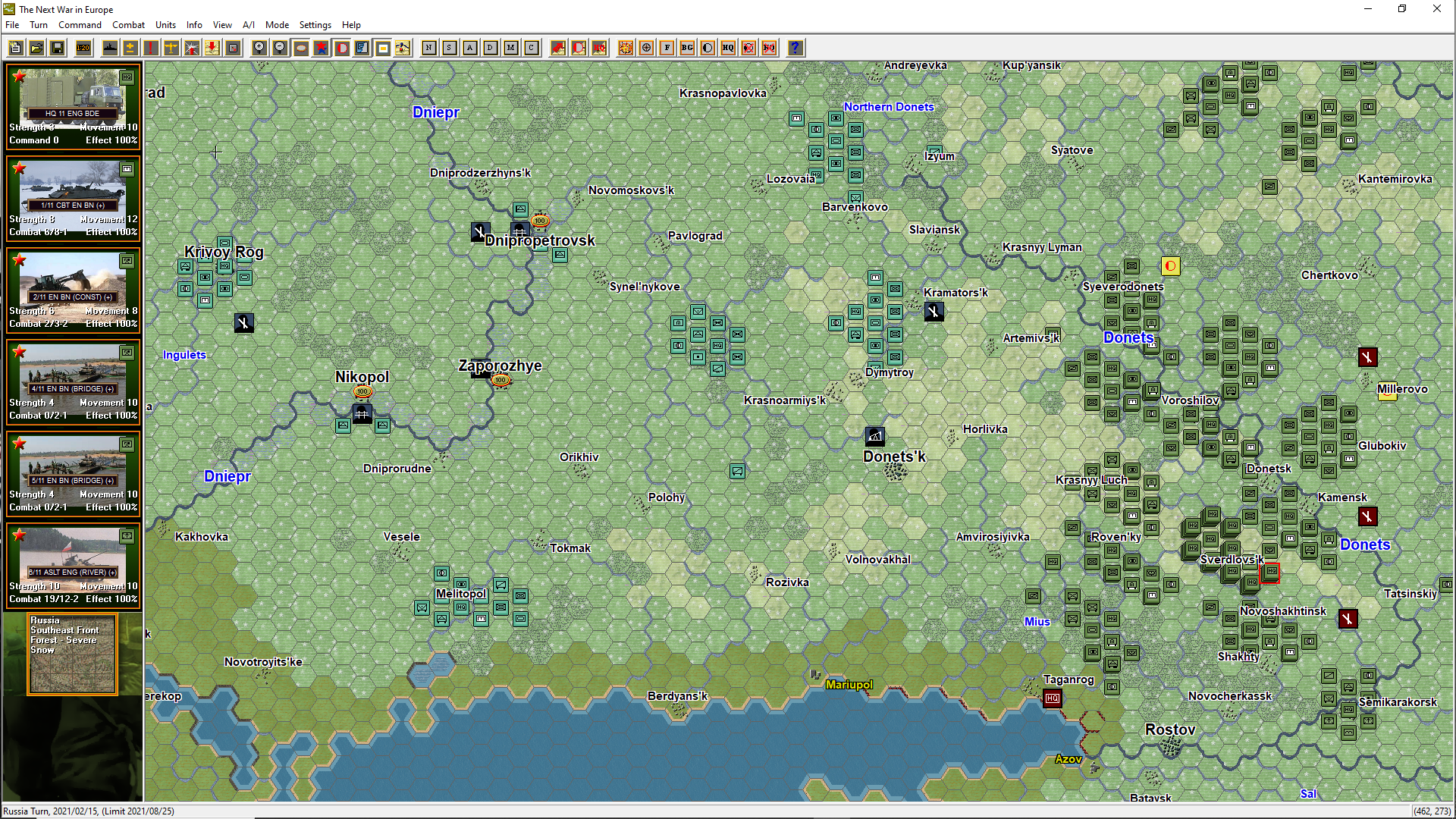
Of interest, we had an unpublished title that was being worked on in 2020 called the ‘Next War in Europe’ using the Strategic War engine. This covered a hypothetical Russian incursion into Ukraine, Poland, and the Baltic States and ultimately a face-off with NATO. The scenario start date was February 15th, 2021, which almost matched the actual invasion date a year later of February 22nd, 2022. We stopped work because of the actual invasion for the reason listed above.
THC: Name a non-WDS game that you think deserves more attention.
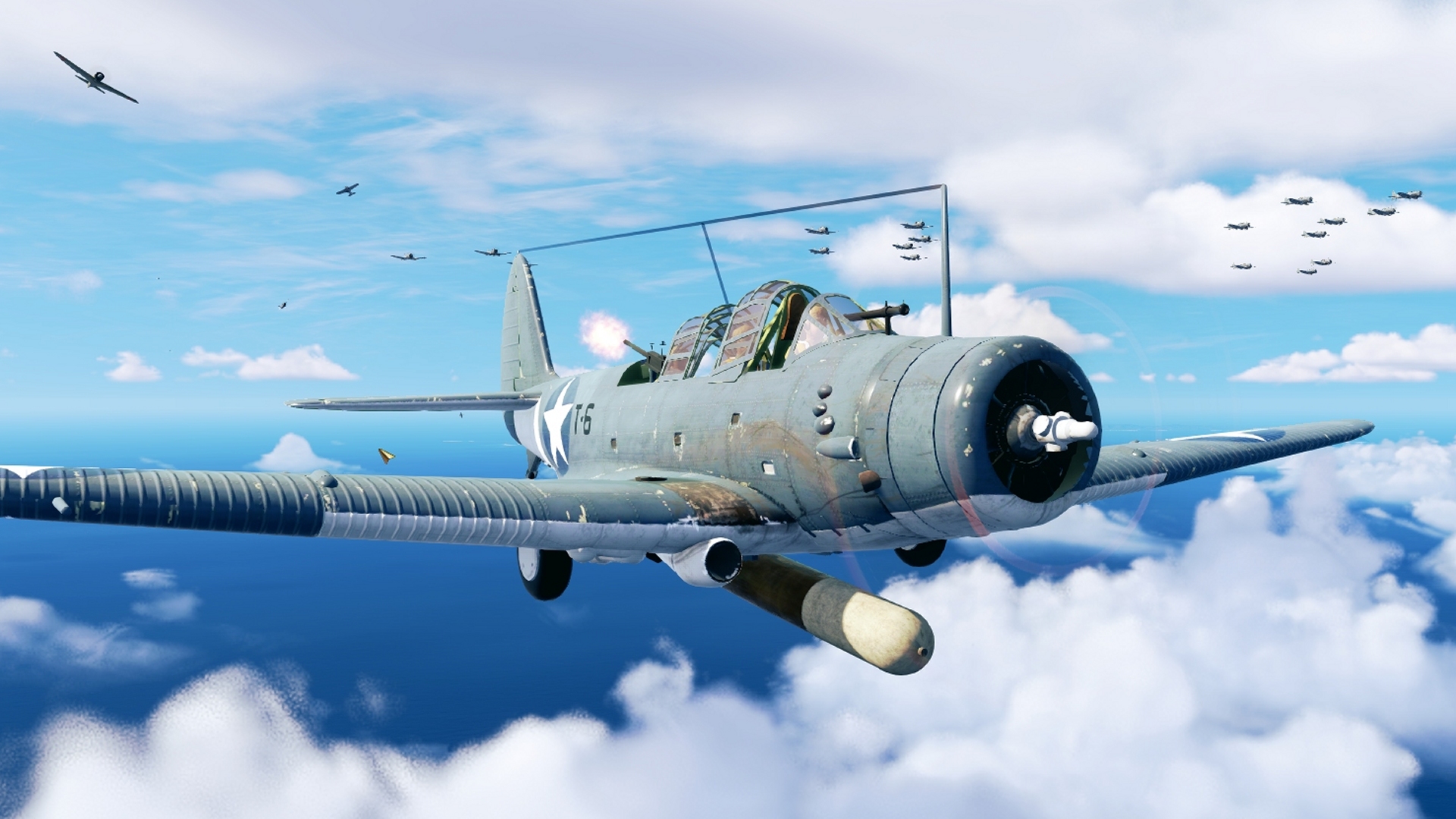
Rich: I am a huge fan of what the Drydock Dreams Games team are creating. Alain has pulled together a stellar (tiny) team to deliver what I believe will be the last word on WW2 carrier command in the Pacific with their Task Force Admiral – Vol.1: American Carrier Battles. The quality of research, sophistication of programming and attention to detail is probably one of the deepest I have seen in wargame simulations. They have beautifully integrated a 2D and 3D world and built systems such as task force formation positioning that are technically very difficult but integrated beautifully into the engine. From what has been shared, there is a range of perspectives and command positions that can be taken to experience the gameplay from.
It is fitting that MicroProse are publishing the game as it appears to be a more than worthy successor to their legendary 1942: Pacific Air War and Task Force 1942. Everyone should go and wishlist it on Steam!
THC: Thank you for your time

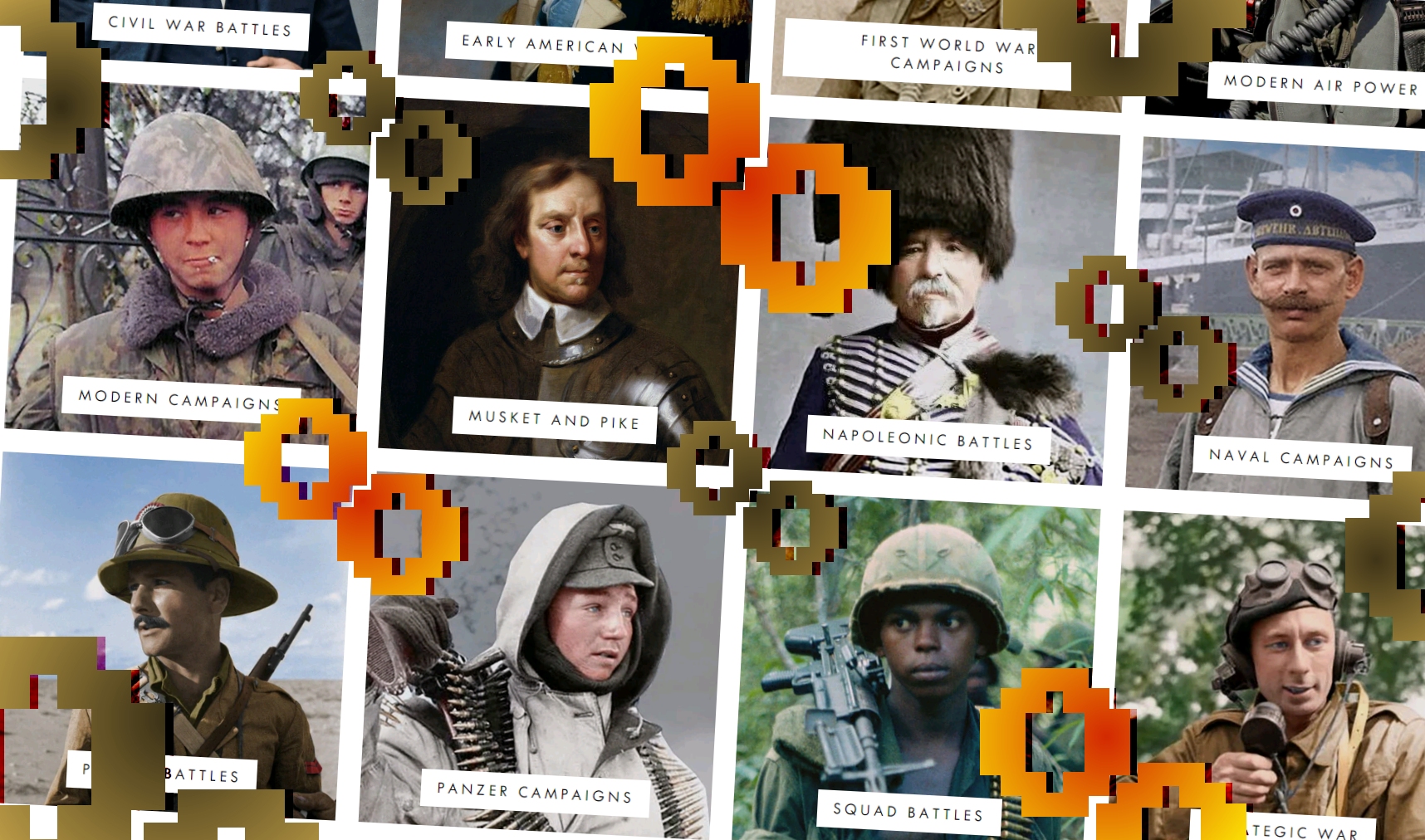
Fantastic interview! I think WDS is doing very interesting work that doesn’t get enough coverage. Looking forward to The Thirty Years War game, and that glimpse of the Brits v. the Zulus has really whetted my appetite!
They really should put their games on Steam. Who gives a toss about negative reviews anyway? Plus there’s a ton of more hardcore wargames on the platform that do fine. I’m sure the massive exposure of being on a big platform of steam will more than make up for the 30% cut they take. At least they’re not completely ruling it out, so just go for it I say. I remember back when Slitherine/Matrix were opposed to putting their stuff on Steam years ago, although they were a lot more argumentative about it! They finally relented and although they don’t have absolutely everything on steam they do have quite a fair bit, including the grognard as hell Command Modern Operations and they seem to be doing quite well out of it.
Glad to see that AI is being focused on as it is pretty weak, especially in the older era games. I didn’t know about that ENVOY program but it does look quite interesting, might have to give it a go. One thing I love about WDS is how they keep updating all these games, some of them are really quite old by now, Like Panzer Campaigns: Smolensk ’41 was released by John Tiller in 1999 and WDS last updated the game a couple of months ago. That’s quite some dedication! Also their blog posts are quite interesting. Looking forward to the future 3YW and Zulu War games.
Also programmatic doesn’t mean what this chap seems to think it means!